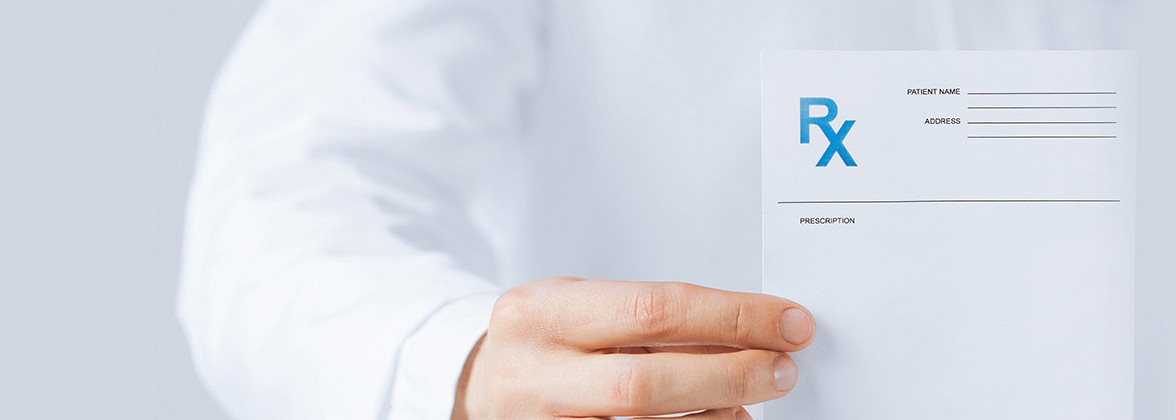Skin Rashes
Overview
 A skin rash may be defined as a brief eruption of crimson, bumpy, itchy, or scaly patches of skin that welts or blisters may accompany. They can occur in a wide variety of locations on the body for several reasons.
A skin rash may be defined as a brief eruption of crimson, bumpy, itchy, or scaly patches of skin that welts or blisters may accompany. They can occur in a wide variety of locations on the body for several reasons.
The affected area may be either small or large, depending on the type of rash. If you have a skin rash, it is recommended that you see a doctor to investigate it further and learn more about your specific condition.
Atopic dermatitis may be the cause of your skin rash. Also commonly referred to as eczema, atopic dermatitis is characterized by itchy inflammation of the skin. It tends to form in crevices or folds of skin in the elbows, thighs, neck, and behind the knees.
Contact dermatitis, also known as contact eczema, is another skin rash that is caused by an allergen or irritant such as soap, fragrances, jewelry, or plants such as poison ivy. Symptoms often include a red, itchy area of skin that has been in contact with the allergen.
As the name suggests, drug rash is brought on by drugs such as diuretics and antibiotics that cause red spots to form on the skin in most places of the body. These drug rashes could also cause life-threatening allergic reactions that may warrant a trip to a doctor or hospital.
Christmas tree rash, known formally as pityriasis rosea, is distinguished by its patchiness, often forming patches that begin on the abdomen, back, or chest and spread. The patches tend to create a pattern similar to a Christmas tree, earning it its unusual name.
Miliaria, also known as heat rash or prickly heat, is commonly found in two forms, namely miliaria cyrstallina and miliaria rubra. It occurs in hot, humid weather when sweat ducts become blocked and sweat gets trapped beneath the skin. Red lumps or blisters characterize this type of rash.
Signs, Symptoms, and Types of Skin Rashes
Here is a more detailed look at each type of skin rash, and the signs and symptoms to look out for.
1.Atopic Dermatitis or Eczema
The symptoms of atopic dermatitis vary from person to person. However, here are some common signs that your skin rash is caused by atopic dermatitis:
- Itchy skin that becomes itchier at night
- Thickened skin that cracks or becomes scaly
- Dry skin, particularly in the affected area
- Red patches, especially around areas where folds or crevices are found, such as the neck, or the back of the knee (eczema can occur on the face as well)
- Sensitive skin
- Tiny, raised, red, fluid-filled bumps that could ooze fluid or crust
- Raw, oozing skin as a result of scratching
Atopic dermatitis is common in young children below the age of five, but it can occur in adults.
2.Contact Dermatitis
Because contact dermatitis is caused by the skin's exposure to an allergen, it occurs at the location where exposure to the allergen occurred.
It is characterized by:
- Redness or inflammation
- Burning, swelling, or tenderness in the affected area
- Scaly, dry, or cracked skin
- Itchiness
- Bumps and fluid-filled blisters often accompanied by oozing and crusting
3.Drug Rash
Drug rashes can manifest as a range of skin rashes, such as pink or red bumps, hives or urticaria, red patches, blisters, sensitivity to the sun, or bumps that contain pus. These drug rashes can affect the entire surface of the skin or just one or two parts of the body. They often occur on both sides of the body and typically cause itching.
If symptoms such as trouble breathing and tightness in the throat or chest occur, it is essential that you seek immediate healthcare, as drug rashes can be life-threatening.
4.Christmas Tree Rash
A Christmas tree rash is distinguished by a scaly, raised patch of skin. It differs from other rashes as it occurs in stages.
Initially, a single large, oval, or circular patch typically forms on the chest, back, or abdomen. It eventually changes its appearance, and smaller patches gradually begin to appear near the initial patch.
These smaller patches usually spread to form a pattern that looks like a pine tree on the back. Christmas tree rash does not typically develop on the palms of the hands, soles of the feet, scalp, or the face. Itching caused by this rash can be moderate to severe.
5.Miliaria or Heat Rash
There are three types of heat rash:
- Miliaria crystallina. This is the mildest form of heat rash and causes clear bumps filled with fluid that tend to break easily.
- Miliaria rubra. Known as a deeper rash, this form of miliaria causes red bumps and itching in the area.
- Miliaria profunda. This is a rare type of miliaria that causes sweat to ooze out of the affected sweat glands, causing the formation of lesions resembling goosebumps.
Skin Rash Diagnosis
Because symptoms of these conditions can often overlap, it may be difficult to diagnose a skin rash on your own. It is best to see a doctor who can perform an examination of the affected area or areas to determine what type of rash it is.
These examinations can even be conducted by an online doctor for skin rash, and you can get an online prescription for skin rash to begin treating symptoms.
Testing is rarely done on skin rashes and may only be done in rare cases of severe infection by performing a scraping of the affected area.
Treatment, Medications, and Care of Skin Rashes
When you have a skin rash, experts generally recommend staying away from harsh chemicals, including fragranced soaps and shampoos. Anything that irritates the skin, including clothing made from wool or other material that could rub against the skin and cause irritation, should be avoided. This includes jewelry, cosmetics, and other known irritants.
Medication for skin rashes is dependent on the type of skin rash you have, and they range from antihistamines to steroids, but it is best to see a doctor or get a prescription online for skin rash rather than self-medicating.
Living with and Managing Skin Rashes
Many skin rashes may go away on their own or require a short dosage of medication such as an antihistamine, and they disappear completely. However, other conditions, such as atopic dermatitis, may require a series of treatments, and symptoms could persist for a long time, so it is best to seek help from a healthcare provider.
1.Atopic Dermatitis
Atopic dermatitis can be a difficult condition to manage, so it is essential to seek help from a doctor before symptoms become unmanageable. Other complications, such as hay fever, asthma, allergic contact dermatitis, and trouble sleeping, could accompany this condition.
The following steps can be taken to prevent the onset of this rash or reduce its symptoms:
- Moisturize the skin at least twice a day with a fragrance-free moisturizer
- Identify triggers and avoid or remove them. This could include dust, a build-up of sweat, certain foods or food groups, or certain soaps
- Take shorter, cooler baths or showers
- Switch to gentler soaps such as fragrance-free baby soap
- Avoid treating the skin harshly, especially after a bath or shower. At yourself dry gently to avoid irritating the skin
2.Contact Dermatitis
Identifying the cause of contact dermatitis is the key to treating it. If you notice a rash forming where you have worn a particular type of jewelry, you may be allergic to that type of metal, and therefore you should avoid wearing jewelry made from that metal.
Additionally, certain soaps, cosmetics, and even plants can cause contact dermatitis, so it is best to avoid them. Avoiding these substances after the onset of symptoms can cause the rash to disappear on its own within two to four weeks.
In the meantime, make use of anti-itch creams and cold compresses to manage symptoms.
3.Drug Rash
Mild drug rash may be managed with cool showers or compresses calamine lotion and antihistamines. Still, self-care is usually not advised for drug rashes, as symptoms tend to be severe and even life-threatening, so it is best to seek medical care.
4.Christmas Tree Rash
Christmas tree rash doesn't usually need any treatment and often disappears on its own within a month or two. Sufferers can manage symptoms with over-the-counter medication such as antihistamines, hydrocortisone cream, and lukewarm oatmeal soaks.
5.Miliaria
Heat rash usually disappears on its own, but it could lead to infection if not managed correctly. Sufferers can prevent or ease symptoms of miliaria or heat rash in the following ways:
- Avoid overdressing, especially in the summer months, as this could cause excess sweating
- Don't wear tight fitted clothing, as this could cause sweating and blocked sweat glands
- Stay cool in inclement weather. Avoid being outdoors on hot days and make use of air conditioning or fans to keep yourself cool
The Bottom Line
Skin rashes can occur for a number of reasons, and it is often difficult to self-diagnose and treat them, so it is best to seek medical care.
Doctors can help you obtain the proper treatment for your specific rash, and it is best to see a doctor as early as possible to prevent the rash from spreading or symptoms from worsening.
With the proper care and treatment, you are sure to see improvement in your symptoms.

WARNING: Limitations of Online Doctor/Medical Consultations and Online Prescriptions, QuickRxRefills Cannot and Will NOT Prescribe, Dispense, or Resell any and all medications Narcotics/Controlled Substances (this policy is fully enforced by the Drug Enforcement Administration (DEA)) for Anti-depressants, Pain, Anxiety, Weightloss, Sleep, ADHD/ADD, Anabolic Steroids, Testosterone Replacement Therapy and any and all Medications that contain GabaPentin or Pseudroephedrine including non-controlled substances or any medications that are considered controversial, Off Labeled (Growth Hormone aka HGH) or recalled in nature such (i.e. Retin-A, Accutane). Furthermore, QuickRxRefills is not a substitute for an office based physician in your location nor is it a substitute for Emergency Medical Care or 911. If you do experience a "true" medical emergency your are encouraged to pick up the phone and dial 911 as soon as possible.






